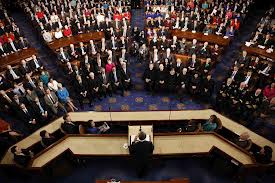After speculation that he would do more, President Obama ended up saying very little about U.S. nuclear weapons in his State of the Union speech:
“…we’ll engage Russia to seek further reductions in our nuclear arsenals and continue leading the global effort to secure nuclear materials that could fall into the wrong hands, because our ability to influence others depends on our willingness to lead and meet our obligations.”
The most encouraging phrase was that last one: “…our ability to influence others depends on our willingness to lead and meet our obligations.” He’s right about that. But if he’s serious about meeting our obligations under the Nuclear Nonproliferation Treaty, which requires the U.S. and other nuclear weapons states to pursue disarmament, he’d better get moving. According to news reports, he is considering a very modest reduction in deployed strategic weapons—to 1,100. That is progress relative to the 2011 New START agreement, under which the U.S. and Russia will each reduce their deployed strategic forces to 1,550 by 2018.
But consider this. When in 2009 the administration asked the Pentagon how many deployed strategic weapons were required under the Bush administration’s nuclear policies, the answer was 1,300. Given that the Obama administration’s 2010 Nuclear Posture Review called for reducing the role of nuclear weapons, the proposed 1,100 warhead level is modest indeed.
Moreover, this will still leave some 3,000 U.S. tactical and reserve weapons untouched.
The bottom line is that the U.S. could easily cut its arsenal to a total of 1,000 total nuclear weapons—including deployed and reserve, long-range and short-range—while maintaining an effective deterrent. And continuing to maintain more nuclear weapons than necessary for security is a waste of taxpayer dollars.

